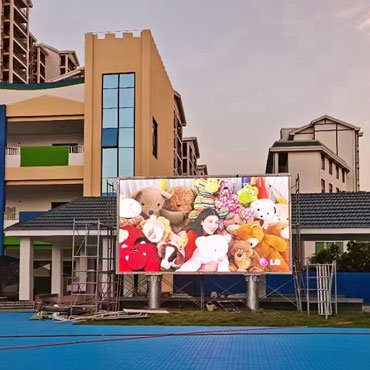What is the Mandalorian LED Wall?
This is an immersive LED wall spliced together through virtual production of LED displays. The entire immersive LED wall is a semicircular LED video wall with a 270° viewing angle, 20 inches high (approximately 6.1 meters) and 75 inches (approximately 22.9 meters) in diameter. More than 50% of the first season of “The Mandalorian” was shot this way.
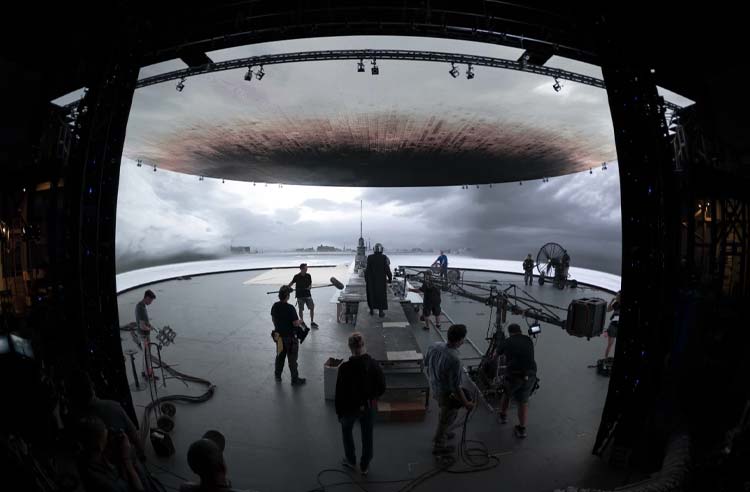
Why use a Mandalorian wall instead of a green screen?
We all know that many special effects scenes nowadays are indispensable for shooting with green screen. It is mainly to facilitate film and television editors to intercept and synthesize the pictures later. This approach is simple in the early stage, but requires a lot of work in the later stage.
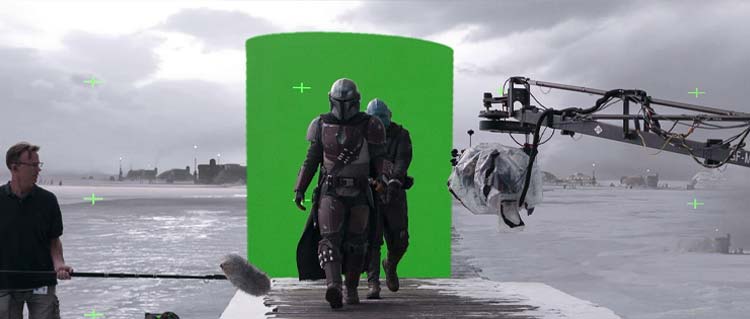
Especially when filming a TV series, it is often not one or two episodes, but more than 20, more than 40, or even more than 100 episodes. Such a large amount of work will take up a lot of time in the later editing and synthesis.
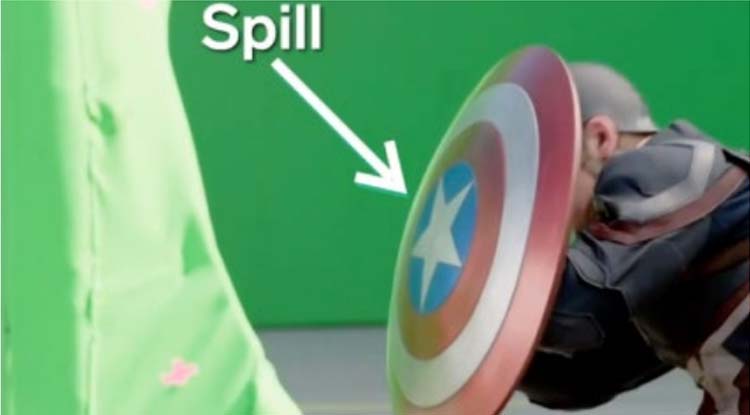
If we can directly integrate existing scenes into the shooting, this will greatly reduce the processing time of the film in the later stage. In this way, the film that may originally take half a year to complete can be completed in only one and a half months.
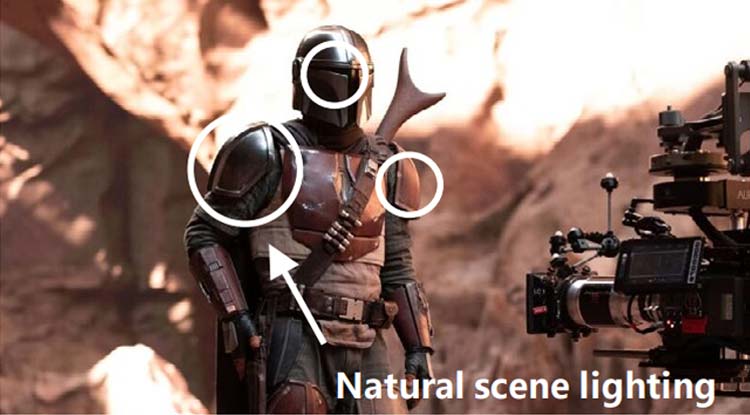
How did virtual production of LED displays help the filming of “The Mandalorian”?
Earlier we briefly mentioned the help of virtual production LED display for shooting, but for those who have never been exposed to virtual production LED screen, they will definitely be curious about how this virtual production LED display screen works? Why can the film of “The Mandalorian” be so realistic?
With questions, we consulted Richard Bluff from the UK. He has served as the visual effects synthesis supervisor in many classic film and television works, including “The Mandalorian”.
He told us that the reason “The Mandalorian” achieves such good visual effects is because the scenes in the film are combined with motion capture volumes on LEDs.
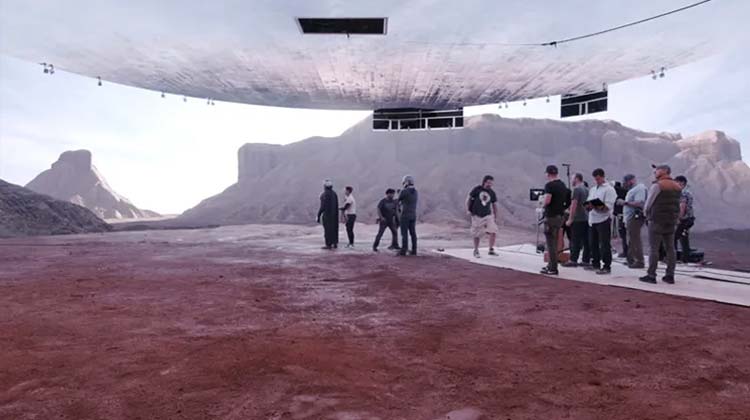
The motion capture studio can clearly create the location and movement of the camera, and then multiple 3D background materials created by ILM (Industrial Light and Magic) are played on the LED wall, edited in real time during the shooting process, and processed through NVIDIA’s GPU Perform systematic high-quality effect tracking and perspective correction.
This perspective parallax relationship is very close to the “holographic imaging platform” (Holodeck), so some people also call it the “LED parallax image sense”.
The whole process not only greatly reduced the post-production editing work, but also produced more precise and beautiful scenes under the light adjustment of the studio, allowing the actors to be immersed in the scene and obtain the best effect.
Due to its success in the imaging of “The Mandalorian”, ILM is further improving and researching this end-to-end virtual production approach and naming it ILM StageCraft.
Summary of the technical background of The Mandalorian
The Mandalorian LED wall has a maximum brightness of 1800 nits
The Mandalorian LED wall uses a high-strength die-cast aluminum box and high-quality LED lamp beads, which can maintain high brightness and are durable. Its maximum brightness can reach 1800 nits, which is 2–3 times that of many indoor LED displays, so it can feel very bright when used indoors.
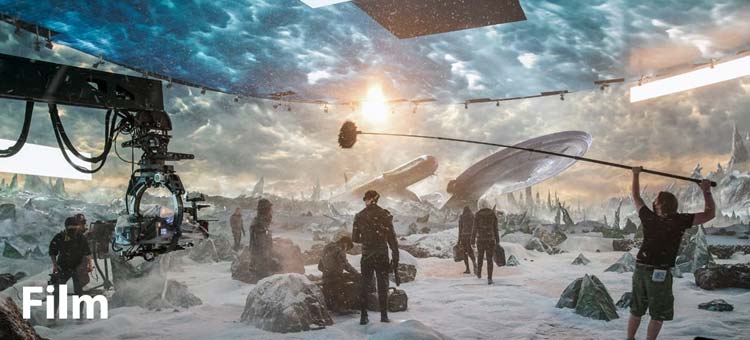
Some people may be worried about whether problems will occur if it is run at maximum brightness for a long time. Here we will deduce it.
At peak brightness, assuming our camera shoots at 24 fps using a standard 180 degree shutter,
So, 180-(24*0.5)=168, means that the LED can produce an intensity of 168 candelas, which is equivalent to the intensity of f/8 3⁄4 at 800 ISO.
At this intensity, the Mandalorian LED wall is completely fine. In addition, we generally do not always use the maximum brightness for playback, which will affect the effects of other lights in the studio.
The Mandalorian used a full-frame Ultra Vista 1.65x anamorphic lens
For non-professional photographers, they may not know what the concept of the 2.37:1 aspect ratio captured by the Ultra Vista 1.65x anamorphic lens means. Here I will briefly introduce it.
Our common aspect ratios usually include: 1.89:1 (17:9), 1.78:1 (16:9), 1.2:1 (6:5), 1.33:1 (4:3), 1.5 :1 (3:2), 2:1, 2.4:1 and 1:1. Different aspect ratios can match different active sensor areas.
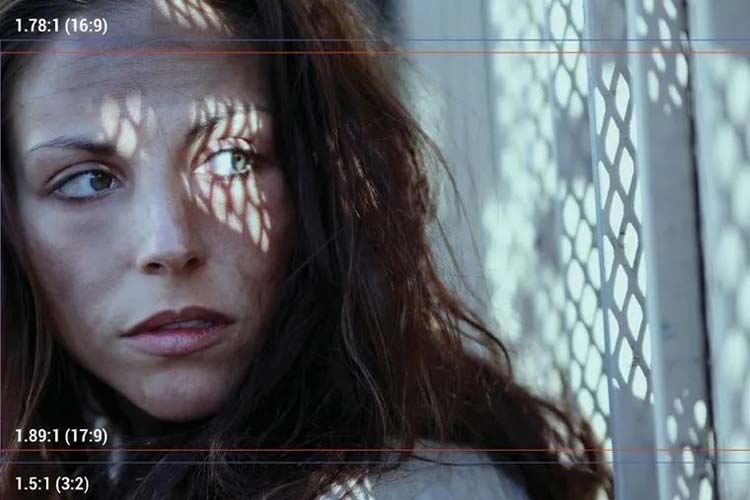
Have you noticed a few unfamiliar ratios, such as 1.89:1, 1.78:1, which are different from the familiar 17:9 or 16:9. In fact, they refer to the aspect ratio during screening, only However, we are generally familiar with using ratios in parentheses.
Usually the finished film standard we deliver is 1.89:1 (17:9) established by the “Digital Cinema Initiative” for “flat” or spherical theater release films, but when the cinema produces a Digital Cinema Print (DCP), the projection (Screen mask) cannot fully display the entire screen, so it will be ultimately cropped to a 1.85:1 ratio.
The maximum film ratio that an ordinary camera can achieve is 1.89:1 (17:9). If you want to exceed this value, reach 2:1, or even 2.4:1, then you need to use an anamorphic lens or a spherical lens.

Panavision’s full-frame Ultra Vista 1.65x anamorphic lens was used when filming “The Mandarin”. Its anamorphic compression allowed the LF’s 1.44:1 aspect ratio to be used to create a 2.37:1 aspect ratio, which is very close to 2.4:1. , so only a slight cropping is required (see American Cinematographer, February 2020 magazine for more details).
Semicircular studio 270° immersive space
A 270° semicircular studio with a height of 6 meters and a diameter of about 23 meters was built. A total of 1326 LED modules were used. After splicing, the viewing angle of the LED wall reached 180°, which means that it can be viewed from any angle. , you can experience the ultimate high-definition visual effects.
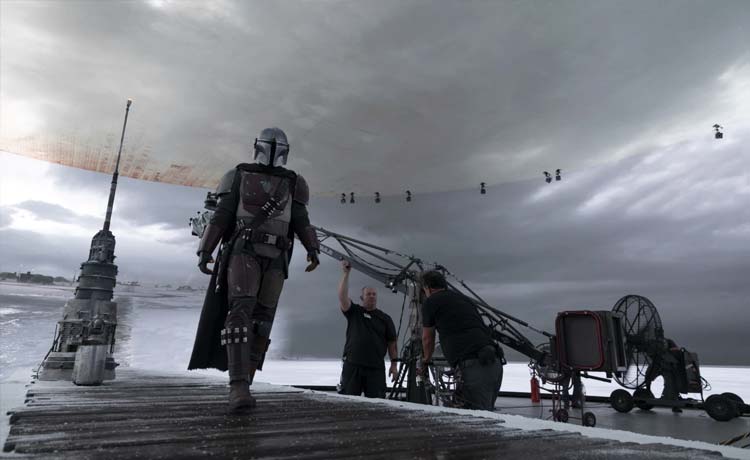
The pixel pitch of the LED module is 2.84mm, and the chip uses an 8K high-refresh IC, which completely avoids moiré patterns generated during the shooting process.
132 independent LED panels can form a 360° fully enclosed scene
There are also two hanging flat panels 5.4 meters long and 6 meters wide composed of 132 independent LED modules, which can be combined with the semicircular studio in front to form a 360° fully enclosed scene.
Telephoto lens enables easy zooming of images
Since it is necessary to frequently switch between lenses of different focal lengths during the shooting process, if an ordinary camera is used, the LED wall of the Mandalorian will not be able to focus during shooting. The Panavision Ultra Vistas lens can perfectly solve this problem.
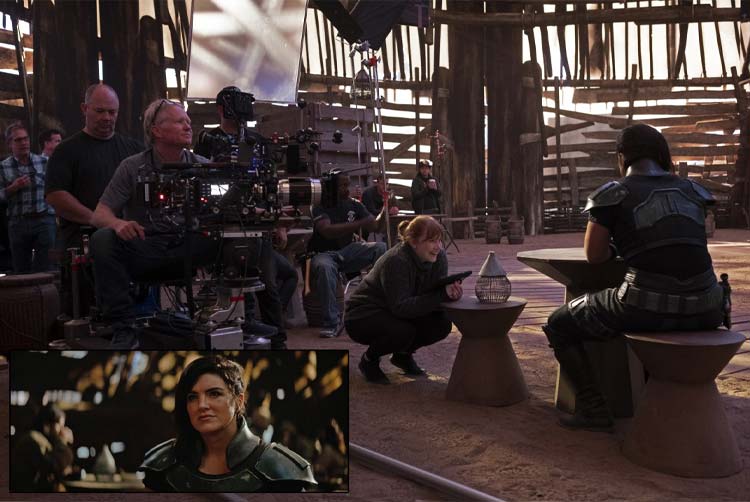
The 2.3 aperture of the Panavision Ultra Vistas is similar to the 0.8-stop aperture in the Super 35. It contains Ultra Vista lenses from 50mm to 180mm, ranging from T2 to T2.8, and the DOP is exposed around T2.5-T3.5, thus completing the entire shooting process perfectly.
How much does The Mandalorian LED wall cost?
Because it is a professionally customized product in conjunction with a top film and television team, the cost of The Mandalorian LED wall is very high. ILM and Golem Creations have revealed that the Mandalorian LED wall is conservatively estimated at around $100 million.
However, what we need to know is that the shooting scene of Mandalorian is not only the LED wall, but also the Unreal Engine system, cameras, shooting scripts and so on. According to Callum Walker, filming manager of CVP, one of the partners, the cost of filming alone is as high as $1.5 million.
Mandalorian LED Wall vs LED Video Wall
Resolution
Most LED video walls generally have 2K resolution and can reach 4K resolution, which is a relatively high-end product. The Mandalorian LED wall has reached 8K resolution, which is the limit that LED video walls can currently achieve.
Viewing angle
LED video walls on the market generally have a viewing angle of 170 degrees, while the Mandalorian LED wall reaches an astonishing 180 degrees, which means that it is very clear no matter what angle it is viewed from.
Brightness
Most LED video walls used indoors have a brightness between 800-1200nit. There are only a handful of LED walls like this that can reach a brightness of 1800nit.
Shape
Most of the LED video walls we see are flat and quadrilateral, while the Mandalorian LED wall is semicircular. From the perspective of splicing difficulty, semicircular splicing is much more difficult than flat splicing.




